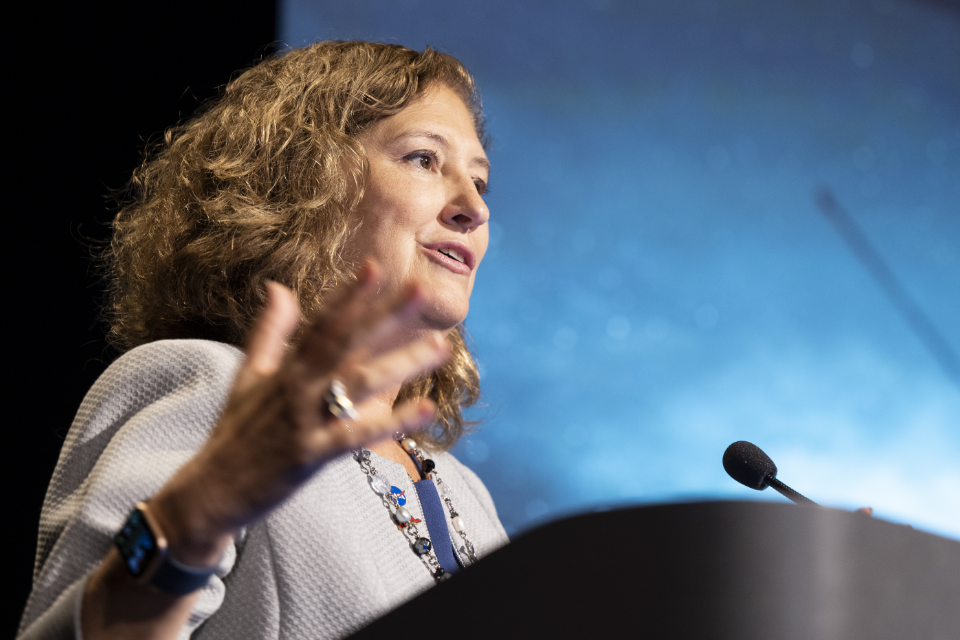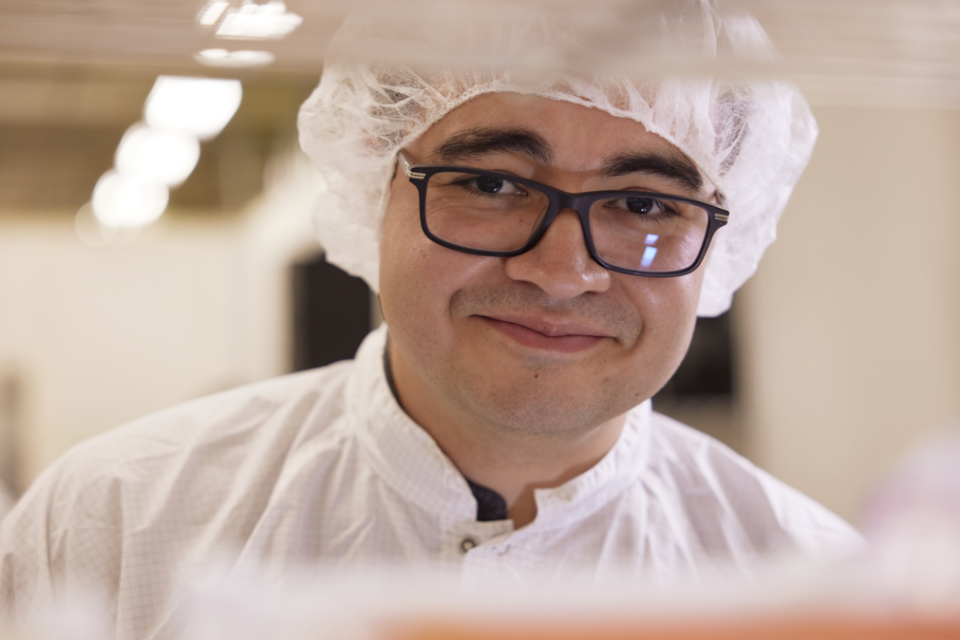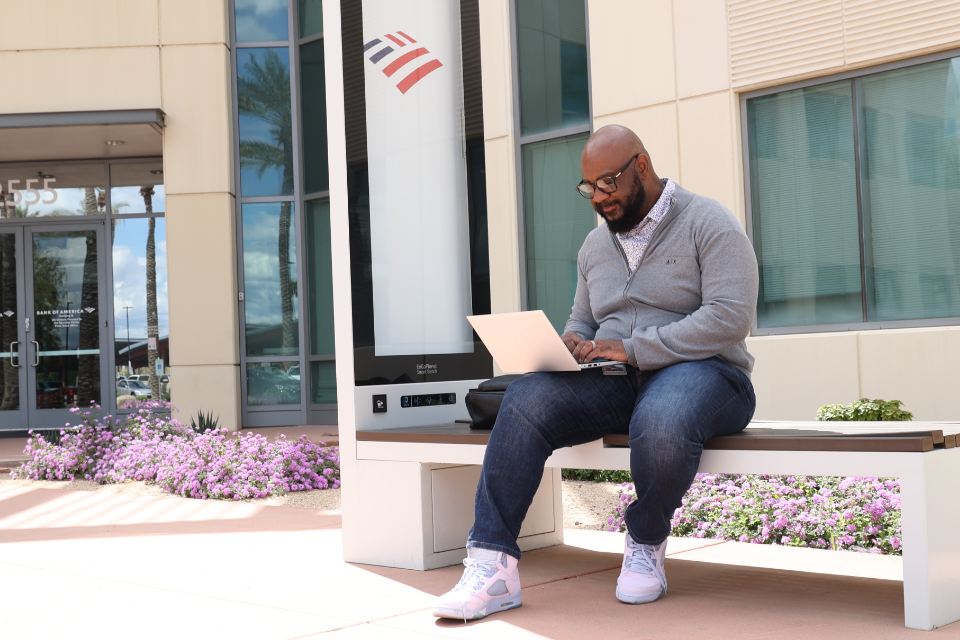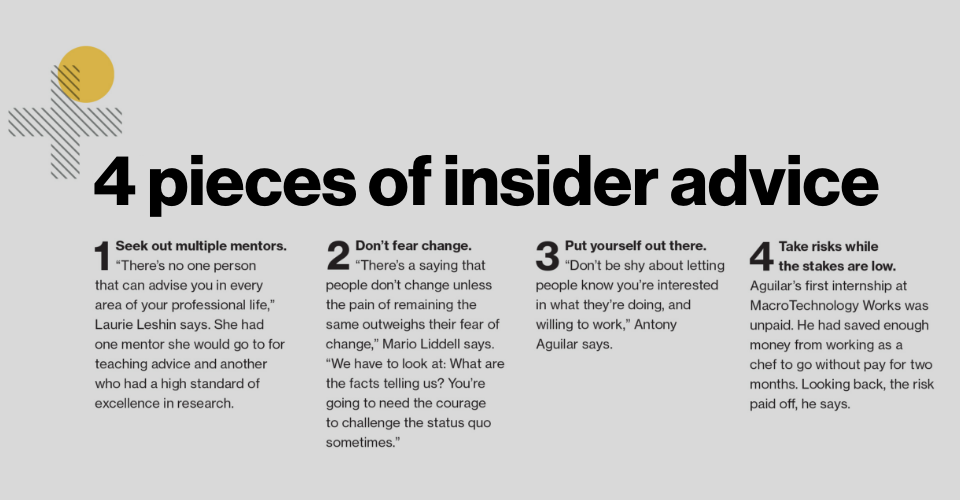Editor's note: This story originally appeared in the summer 2023 issue of ASU Thrive magazine.
What makes a job great? It’s not the money or the prestige — though they don’t hurt.
It’s about a job fitting for your passions and personality. About being able to do more work you love than work you don’t.
These alums have positions that make people sit up and take notice. But more impressive than their roles is how well-suited they are to them. From a solar engineer to a NASA leader, these alumni explain how they reached their dream jobs — and share advice for your journey.
When you’re constantly pushing the boundaries of what’s possible, there are no boring days at the office
Laurie Leshin has had a strong career in science, including serving as president of Worcester Polytechnic Institute and as an advisor to President George W. Bush on space policy. Photo by Bob Paz courtesy of NASA/JPL
Laurie Leshin, ’87 BS in chemistry, is director of NASA’s Jet Propulsion Laboratory, the world’s leading center for robotic space exploration. Its motto: “Dare mighty things together.”
“It’s pretty much hair on fire every single day,” Leshin says. “It’s sort of the highest highs and the lowest lows.”
For instance, last December, the Mars lander InSight wasn’t able to charge its battery because of dust on its solar arrays and went silent. (NASA sent out a heart-wrenching tweet of its last image.) And on the same day, the Perseverance Mars rover deposited its first sample tube on the planet’s surface for when humanity can muster a round-trip mission to the planet.
Leshin is the first woman to lead JPL, which has some 6,000 staffers and a 168-acre campus in Pasadena. It’s the latest step in her groundbreaking career in science, academia and government.
She has served as president of Worcester Polytechnic Institute and dean at Rensselaer Polytechnic Institute, advised President George W. Bush on space policy, and serves on the Smithsonian’s National Air and Space Museum advisory board.
“I had always been interested in space,” says Leshin, who was a chemistry major at ASU.
Sophomore year at ASU, Leshin spotted a flyer for a summer internship at NASA in Houston. Knowing that most positions were aimed at college seniors, she reached out to Susan Wyckoff, one of the few female full professors in the physical sciences at that time.
“I cold-called her, basically, and she helped me,” Leshin says.
Working at NASA was a “lightning bolt,” Leshin says. She returned to ASU to graduate, received her PhD from Caltech for graduate school, then came back to ASU to teach before continuing on to NASA and other posts.
A responsibility she takes seriously: being the first woman in many of her positions.
“I feel like I’m holding the space for the people who come after me, to make sure that other people can see themselves in leadership roles,” Leshin says. “I just think it’s incredibly important.”
Antony Aguilar does something new every day — new for him and new for the world
Antony Aguilar, ’16 BS, ’22 PhD in electrical engineering, is a research and development engineer at Solestial. Photo by Jeff Newton
He is head of tooling and design at Solestial, a startup that aims to make durable, cost-effective solar cells for use in space. Because the technology is so novel, the machinery for making it doesn’t exist.
On a given day, Aguilar, ’16 BS in electrical engineering and ’22 PhD in electrical engineering, and his team might be designing a tool in CAD, sourcing standard parts, making their parts or assembling machinery. They’ll be in laser processing rooms or conference rooms or donning booties and gowns to enter a clean room. Rarely is he sitting in his cubicle.
When there is a problem to solve, the team starts from scratch, Aguilar says.
“What we do is what I got into engineering for,” he says. “Designing something from the ground up, testing it, reprogramming or building certain aspects or redesigning the tool as a whole.”
Aguilar got there through a combination of persistence and luck.
He moved around a lot for his undergraduate studies, taking electrical engineering classes at Scottsdale Community College, Mesa Community College, and Chandler-Gilbert Community College before landing at ASU.
A friend he met at Mesa had an internship at what was then ASU’s Solar Power Lab at MacroTechnology Works. Intrigued, Aguilar applied for a summer position and was accepted. He loved the work and continued there as an undergraduate.
“The longer I worked in the Solar Power Lab, the more and more it appealed to me,” he says.
He met Stan Herasimenka, ’13 PhD, at MTW. Herasimenka became a mentor and collaborator and went on to found Solestial.
Aguilar tries to end each day by designing something.
“I feel like that’s the ideal,” he says. “I want to be an engineer because I want to build.”
On his best days at work, Mario Liddell feels like a musician who has a chance to perform in front of a big crowd
Mario Liddell sits outside his Bank of America office. Photo by Ghassan Albalushi/ASU
“It’s that chance to show off the hard work that you’ve done,” Liddell says. “To share the insights you’ve gathered.”
Liddell, ’17 BS in business data analytics and ’22 MS in business analytics, is the bassist for ’90s tribute band Vanilla Spice. But the work he’s referring to is different: his job as a vice president in Bank of America’s customer experience organization. His team focuses on finding ways to improve customers’ digital experiences with the company — through an app, a website, a social media platform or other channels. In that role, he gets to apply his passion for data, researching and finding solutions. It requires a balance of technical knowledge and emotional intelligence.
A typical project involves meeting with business leaders to understand their questions and needs, then finding the data to examine the problem, then cleaning it up and building models for a solution. Finally, he and his team package it into a presentation.
“You can’t speak technical language in a business meeting. You have to listen for what the hidden context is, the question behind the question,” Liddell says.
Liddell earned his degrees at ASU while working full time and says he often refers back to his class notes and files. In his work, it’s not technical ability that matters most; it’s flexibility and a good attitude, he says.
Go to career.asu.edu for videos, tips and networking opportunities.
Story by Sara Clemence, a reporter and writer and former travel editor for The Wall Street Journal, news director for Travel + Leisure and deputy business editor for the New York Post.
More Sun Devil community

Open Doors report: ASU’s doors are open to the world
For the fourth straight year, Arizona State University is being recognized as the top public university choice of international students by the Institute of International Education in its annual…

ASU students receive $25,000 scholarships from NBA legend Magic Johnson
By Henry Smardo Serenity Reynolds Cronkite student Serenity Reynolds balances classes, homework, clubs, internships and jobs, and tuition is always top of mind. She…

ASU Accessibility Awareness Day advocates for a more inclusive digital future
By Jonathan CrowellAs technology continues to drive learning and research innovations, so do efforts to ensure digital products and environments are accessible by all.Last week, Arizona State…




